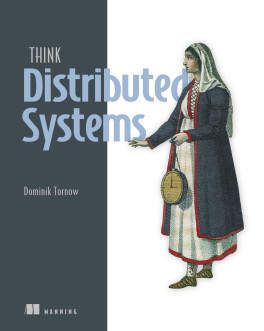pro $24.99 per month
- access to all Manning books, MEAPs, liveVideos, liveProjects, and audiobooks!
- choose one free eBook per month to keep
- exclusive 50% discount on all purchases
- renews monthly, pause or cancel renewal anytime
lite $19.99 per month
- access to all Manning books, including MEAPs!
team
5, 10 or 20 seats+ for your team - learn more

Reactive Application Development is a hands-on guide that teaches you how to build reliable enterprise applications using reactive design patterns.
about the technology
Mission-critical applications have to respond instantly to changes in load, recover gracefully from failure, and satisfy exacting requirements for performance, cost, and reliability. That’s no small task! Reactive designs make it easier to meet these demands through modular, message-driven architecture, innovative tooling, and cloud-based infrastructure.
about the book
Reactive Application Development teaches you how to build reliable enterprise applications using reactive design patterns. This hands-on guide begins by exposing you to the reactive mental model, along with a survey of core technologies like the Akka actors framework. Then, you’ll build a proof-of-concept system in Scala, and learn to use patterns like CQRS and Event Sourcing. You’ll master the principles of reactive design as you implement elasticity and resilience, integrate with traditional architectures, and learn powerful testing techniques.
what's inside
- Designing elastic domain models
- Building fault-tolerant systems
- Efficiently handling large data volumes
- Examples can be built in Scala or Java
about the reader
Written for Java or Scala programmers familiar with distributed application designs.
Packed with hard-won wisdom and practical advice that will set you on the path toward effective reactive application development.
The ultimate reference on reactive application development, with Scala code using Akka as a bonus!
Explains complex concurrency problems in simple words with lots of realistic examples.
Very well written and reflects the authors’ expertise...teaches you how to build modern distributed applications using reactive design patterns.
team
- five seats for your team
- access to all Manning books, MEAPs, liveVideos, liveProjects, and audiobooks!
- choose another free product every time you renew
- choose twelve free products per year
- exclusive 50% discount on all purchases
- renews monthly, pause or cancel renewal anytime
- renews annually, pause or cancel renewal anytime
-
![]() Reactive Application Development ebook for free
Reactive Application Development ebook for free
team
- five seats for your team
- access to all Manning books, MEAPs, liveVideos, liveProjects, and audiobooks!
- choose another free product every time you renew
- choose twelve free products per year
- exclusive 50% discount on all purchases
- renews monthly, pause or cancel renewal anytime
- renews annually, pause or cancel renewal anytime
-
![]() Reactive Application Development ebook for free
Reactive Application Development ebook for free


















 Reactive Application Development ebook for free
Reactive Application Development ebook for free